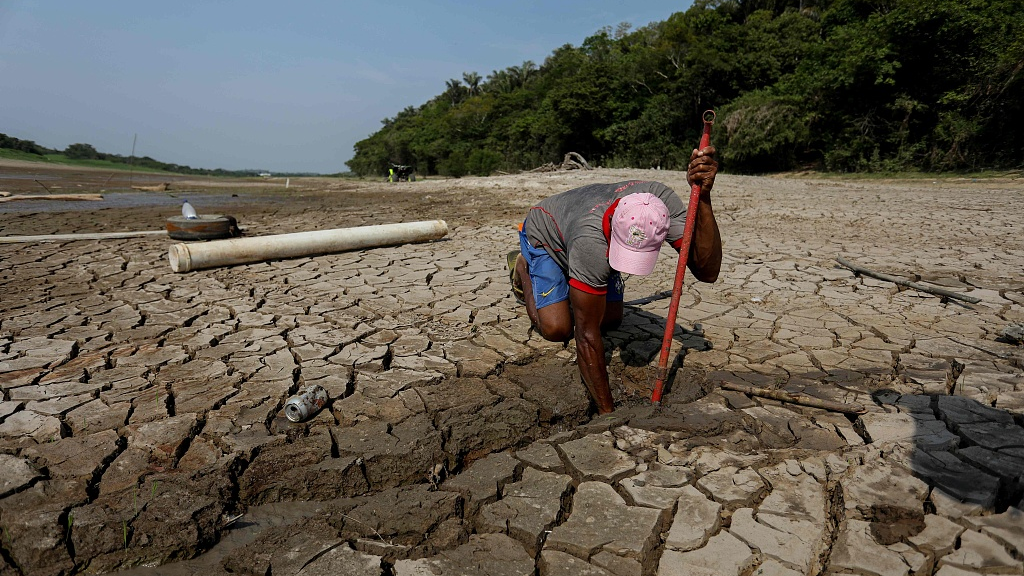
Aerial view of a heart-shaped puddle at Puraquequara Lake in Manaus, Amazonas State, Brazil, taken on October 6, 2023. /CFP
Aerial view of a heart-shaped puddle at Puraquequara Lake in Manaus, Amazonas State, Brazil, taken on October 6, 2023. /CFP
More than 100 dolphins have died in the Brazilian Amazon rainforest last week due to a severe drought. Ayan Fleischmann, a hydrologist at the Mamiraua Sustainable Development Institute, attributed their death to excessive heat in the region.

Ivalmir Silva digs a well to obtain water at Puraquequara Lake in Manaus, Amazonas State, Brazil, on October 6, 2023. /CFP
Ivalmir Silva digs a well to obtain water at Puraquequara Lake in Manaus, Amazonas State, Brazil, on October 6, 2023. /CFP
This year's already poor rainfall is being exacerbated by two climatic phenomena: El Niño— the natural warming of surface waters in the Equatorial Pacific region — and the warming of northern tropical Atlantic Ocean waters, according to Ana Paula Cunha, a researcher from NASA and Brazil's Center for Monitoring and Altertin of Natural Disasters (CEMADEN).
According to CEMADEN, Brazil's disaster warning system, eight Brazilian states experienced the lowest rainfall in almost 40 years from July to September. The drought has damaged the majority of the major rivers in the Amazon Basin, the world's largest basin, which contains 20 percent of the world's fresh water.
Droughts have become more frequent in the Amazon's Madeira River, whose basin extends some 2,000 miles from Bolivia to Brazil, with four of the five lowest river levels recorded in the past four years, said Marcus Suassuna Santos, a researcher with the Geological Survey of Brazil.
(With input from AP)